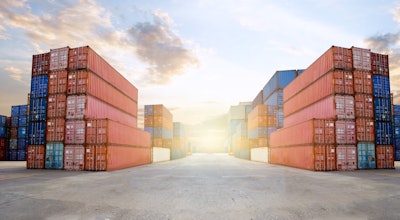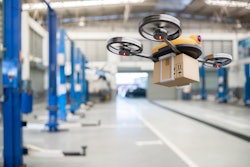
Ideas of the future have always consisted of flying cars and time machines, but we are well into 2022 and instead, have experienced supply chain shortages and economic slowdowns. The International Monetary Fund wrote in its latest World Economic Report that global growth is expected to decrease to 4.4% from the 4.9% that was originally projected for 2022 in its October report. Additionally, this decrease, which is in part due to supply shortages and COVID-19-related disruptions, is supposed to continue into 2023 with global growth expected to slow to 3.8%.
Although technology cannot provide a solution for all of the world’s current problems, there are technologies that if leveraged in the right way, can help increase overall global growth. Internet of Things (IoT)-based sensors can help those in the logistics industry better manage and monitor freight across the entire supply chain, minimizing disruptions and increasing the global growth rate.
Through geolocation, asset tracking, fleet management and more, low power, long-range technologies enable distributors to keep track of the many moving parts involved in the supply chain. These IoT solutions, which are scalable and easy to implement, can be integrated into fleets of vehicles, ships and planes to gather and analyze information on the factors affecting cost, efficiency and optimal use.
Giving companies a closer look
In 2021, there were approximately 11,642 supply chain disruptions worldwide – the highest in the past three years. As disruptions and lack of management solutions increase the number of challenges distributors face, leaders must focus on ways to closely monitor their assets and fleets. According to KPMG, 67% of CEOs are looking to increase investment in disruption detection and innovation processes in order to build resilience into their supply chains.
When dealing with freight that spans across multiple aspects of the supply chain, IoT-based sensors provide the ability to monitor location and conditions. This provides operation managers with more information about the status of their supply chain. The information gathered by long-range sensors can be tracked over time in the cloud, and high throughput to cloud-based software platforms allow fleet managers to better manage their fleet, equipment, maintenance, assets and more.
By understanding the details of the real-time status of their freight, companies have a better handle on their supply chain and can directly address specific disruptions.
Click here to hear more about freight visibility and machine learning:
Putting it into practice
GlobalSat WorldCom, a provider of customization services of electronic design, system integration and software development based in Taiwan, integrated sensors into their supply chain logistics solution. This provides fleet managers using GlobalSat’s system with real-time connectivity, monitoring, cost savings and analytics. By using low power, long-range IoT-based sensors, GlobalSat is able to closely monitor factors including engine temperature, velocity and battery status. Using each of these factors, fleet managers are able to make purchasing and maintenance decisions that are based on historical data.
The more information fleet managers can gather, the more easily they can effectively manage freight in all areas of the supply chain. GlobalSat’s scalable solutions provide cost savings to users as well, with a low cost per month for an entire fleet made up of hundreds of vehicles.
The real-time information flow enabled by IoT solutions lets fleet managers minimize or avoid disruption altogether, which is one step in fixing part of the global supply chain issues.
The bigger picture
With the help of low power, long-range cost effective solutions, companies and fleet managers can closely monitor and manage freight across their entire supply chain more easily. The ability to quickly address, or even prevent any supply chain disruptions, can help increase the global growth rate and get the world back on track.




















